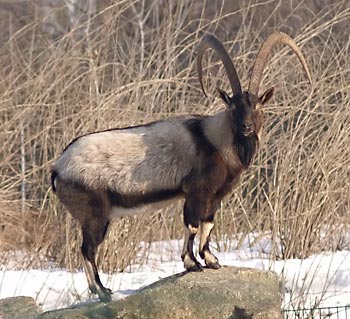Facts About Bezoar ibex
The Bezoar Ibex, also known as the Anatolian Bezoar Ibex or Persian Ibex, is a fascinating wild goat subspecies native to the mountainous regions stretching from Turkey to Iran. These majestic creatures inhabit the mountains of Asia Minor and the Middle East, as well as certain Aegean islands and Crete. Intriguingly, the Bezoar Ibex is believed to be an ancestor of the modern domestic goat, with archaeological evidence suggesting that goats were first domesticated approximately 10,500 years ago.
One of the most striking features of the Bezoar Ibex is its impressive horns, which are the longest in the world relative to the animal’s body weight. Male ibexes can weigh around 60 kg and exhibit horns that can grow up to 1.5 meters long. Females are slightly smaller, with horns reaching about 0.3 meters. Their coat colors change with the seasons; males sport a dark brown coat during the summer, while females display a more reddish-golden hue. In winter, both sexes transition to a gray coat. Additionally, they have a distinctive "goatee" and a black stripe along their spine that becomes more pronounced during the mating season.
The Bezoar Ibex is a popular target for trophy hunters, with hunting seasons typically running from August to March. Due to their high-altitude habitats in rocky and often inaccessible areas, hunting them usually involves a spot-and-stalk method that can take several days. These ibexes thrive in steep, forested hills covered with short bushes, ranging from sea level to altitudes of up to 3,000 meters, particularly in eastern Turkey.
Interestingly, there is also a hybrid subspecies of the Bezoar Ibex, resulting from a cross between a wild Bezoar Ibex and a domestic goat. Recognized by hunting organizations, these hybrids can be found in certain areas of Turkey. While they share many similarities with the standard Bezoar Ibex, they possess distinct features such as longer, floppier ears and more flared-out horns compared to the true ibex.

 Turkey
Turkey